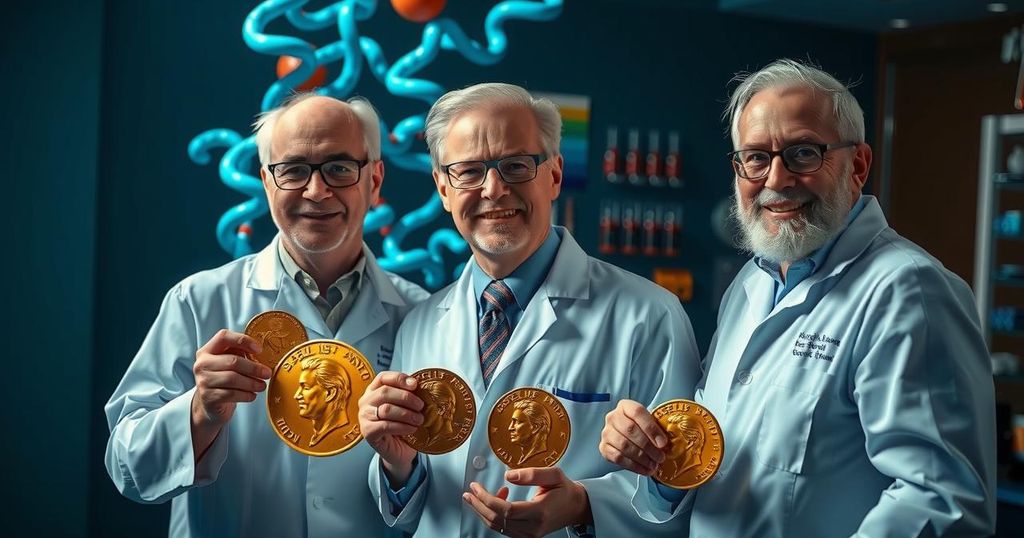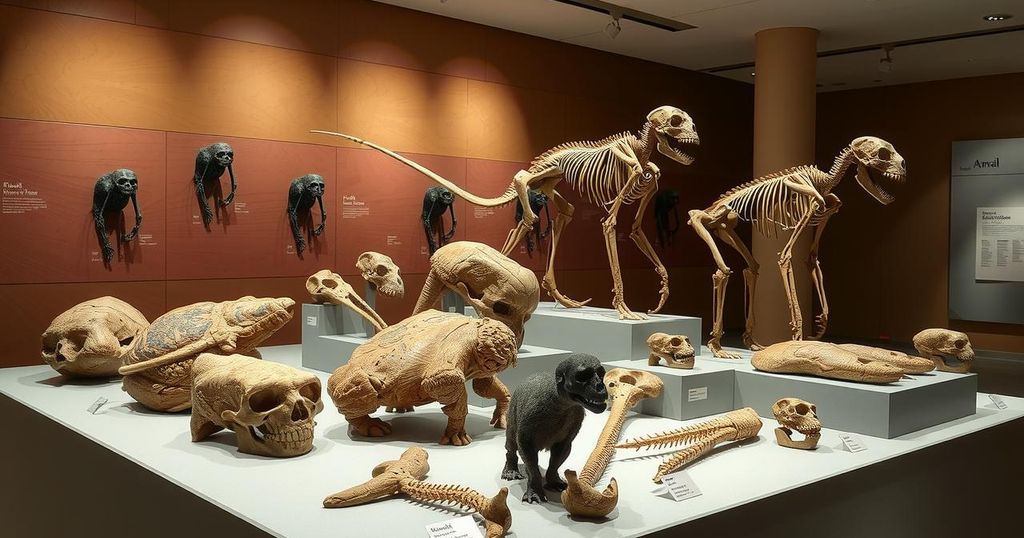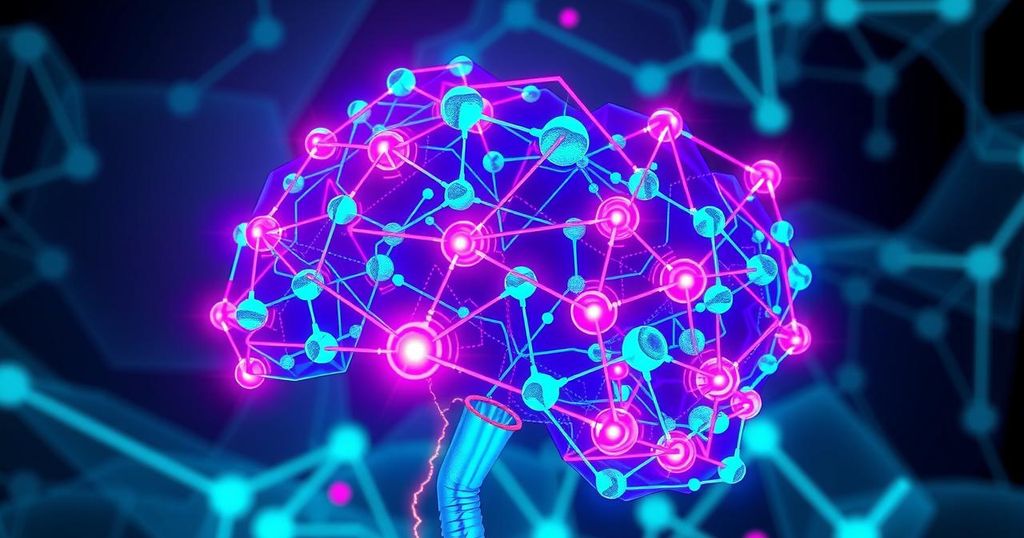Science
CLAIRE MOSES, ENVIRONMENTAL SUSTAINABILITY, EUROPE, GOOGLE DEEPMIND, HEALTH, JOHAN AQVIST, JOHN JUMPER, JUMPER, LONDON, NOBEL COMMITTEE FOR CHEMISTRY, NORTH AMERICA, NUTRITION, RESEARCH, SCIENCE, THE TIMES, TIMES, UNITED KINGDOM, UNITED STATES, UNIVERSITY OF, VENTURE CAPITAL, WASHINGTON
Nina Oliviera
0 Comments
Nobel Prize in Chemistry Honors Innovators in AI-Driven Protein Discovery
The Nobel Prize in Chemistry has been awarded to David Baker, Demis Hassabis, and John Jumper for their significant advancements in predicting and designing proteins using artificial intelligence. Their work has transformed the time-consuming process of protein structure determination into an efficient endeavor, unlocking new possibilities in medicine and environmental sustainability.
In a groundbreaking achievement, the Nobel Prize in Chemistry has been awarded to David Baker of the University of Washington, along with Demis Hassabis and John M. Jumper from Google DeepMind, for their pioneering work in protein prediction and design using artificial intelligence. These scientists have demonstrated how advanced technology can reveal the intricate shapes of proteins—essential molecules that drive life’s processes. Their efforts have not only revolutionized our understanding of proteins but have also significantly sped up the mapping of these structures, a task that previously took decades and is now accomplished in mere minutes.
Demis Hassabis and John Jumper harnessed AI capabilities to forecast millions of protein structures, while David Baker created novel proteins through innovative software. This synergy between biology and AI has far-reaching implications, particularly in healthcare and environmental sciences, as it enables rapid drug discovery and the development of biological solutions for pressing issues, like efficient plastic breakdown.
Johan Aqvist, a member of the Nobel Committee for Chemistry, emphasized the monumental impact of this research, underscoring that the determination of protein structures is crucial for understanding their functions. The models, particularly AlphaFold, have already transformed the scientific landscape, being referenced over 20,000 times in research, thus significantly enhancing the speed and quality of biomedical discoveries. Dr. Jumper noted, “We can draw a straight line from what we do to people being healthy,” underscoring the practical benefits stemming from their innovations.
The potential for crafting new biological tools has emerged from these advancements, offering possibilities such as enzymes that can decompose plastic waste into reusable materials, reflecting the harmony of science and sustainability. As we delve deeper into the wonders of artificial intelligence and its applications in chemistry, the future glistens with potential solutions to some of humanity’s greatest challenges, illuminating the path toward a healthier planet.
The Nobel Prize in Chemistry celebrates individuals whose scientific endeavors have paved the way for innovation and discovery within the chemical sciences. In recent years, the intersection of artificial intelligence and biochemistry has garnered significant interest, particularly as AI’s capabilities unfold in predicting and modeling complex biological structures. Proteins play a vital role in virtually every biological process, making their accurate mapping a crucial task in scientific research. The work of Baker, Hassabis, and Jumper not only advances our understanding of these fundamental molecules but also showcases the power of AI in reshaping traditional scientific methods.
The accolades awarded to Baker, Hassabis, and Jumper highlight a transformative moment in scientific inquiry, marking a remarkable leap forward in the understanding and creation of proteins. This achievement underscores the instrumental role of AI in modern chemistry, particularly in enhancing our ability to address health challenges and environmental concerns. As the speed of discovery accelerates, the potential for innovative solutions continues to expand, promising a future where science not only understands life’s building blocks but also harnesses their power for the greater good.
Original Source: www.nytimes.com




Post Comment